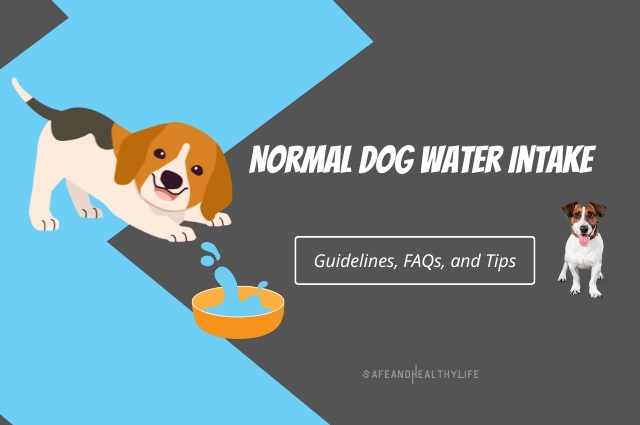
You may like also:
- Health Benefits of Dog Foods
- How to Naturally Treat Your Dog’s Arthritis
- How To Treat Your Dog That Has Fleas?
Welcome, fellow dog enthusiasts, to a refreshing exploration of your furry friend’s hydration needs!
As devoted companions, our dogs rely on us to keep their water bowls brimming with vitality. But how much is enough, and when should we raise an eyebrow at excessive slurping?
Here are the guidelines and tips for “normal dog water intake.”
🐾 The Hydration Puzzle: Unraveling the Importance Picture this: a panting dog after a romp in the park, eyes gleaming with joy. Just like us, hydration fuels their vitality. But have you ever pondered over the whys and hows? Is there a secret formula for the perfect dog hydration? 🤔
🌡️ Liquid Logic: Quest for the Optimal Amount We’ve all heard that too much of a good thing can be… well, not so good. But where does the sweet spot lie? Dive into our dog water calculator to demystify daily hydration goals. Is your dog’s intake sailing smoothly or teetering off course? 🧮
🥤 Thirst Unleashed: When Doggy Desire Turns Excessive A thirst for life is wonderful, but what if your dog’s guzzling like a water warrior? We’re uncovering reasons behind that insatiable thirst. Could it be a harmless quirk or a red flag waving in the breeze? 🚩
Whether you’re a seasoned dog hydration pro or just dipping your paws into the water bowl, our upcoming segments will illuminate the path to understanding and encouraging your dog’s hydration journey.
Stay tuned as we fetch insights, bust myths, and sip on knowledge to unveil normal dog water intake. 🐶🥤💧
Importance of Hydration for Dogs
Quenching the Thirst Within: The Dog Hydration Lowdown
Hydration: More Than Just Sips
Water isn’t just a thirst quencher; it’s a life enabler. Just like we humans, dogs are made up of a whole lot of water. Check out this table for a glimpse of how much water is hanging out in different parts of your dog:
| Organ/Body Part | Water Content |
|---|---|
| Muscles | About 75% |
| Brain | Around 80% |
| Lungs | Roughly 90% |
| Kidneys | A whopping 83% |
Why Hydration Takes the Crown
Hydration isn’t just about keeping your furball’s thirst at bay; it’s about rocking their world from the inside out.
Here’s the scoop on why water is the superhero of pet care:
- Temperature Tango: Water helps your dog regulate their body temperature, preventing overheating on those sunny strolls.
- Digestion Dance: Water keeps the digestion process grooving smoothly, helping your dog absorb all the tasty nutrients they munch on.
- Kidney Power: Adequate hydration supports kidney function, letting those bean-shaped marvels filter out toxins and keep your dog sprightly.
- Cellular Symphony: Every cell in your dog’s body relies on water to do its thing. From zooming around the yard to cuddles on the couch, it’s all thanks to hydration.
- Skin Serenade: Water keeps their skin healthy and coat glossy, ensuring they’re not just feeling good but looking fabulous too.
Remember, friends, when it comes to keeping tails wagging and hearts bounding, a splash of water can make all the difference. Stay tuned as we dive even deeper into the doggone details! 🌊🐶
Dog Water Calculator: Sips and Science Unleashed
Unveiling the Water Equation: Pawsitively Precise Hydration
Cracking the Dog Code
Are you ready to unleash the power of precision when it comes to your dog’s hydration?
Say hello to the Dog Water Calculator! It’s not just any old calculator – it’s the tail-wagging tool that takes your dog’s unique needs and turns them into a hydration roadmap.
🔍 The Water Equation: Sip by Sip
Calculating how much water your four-legged friend needs involves a bit of dog data magic. Consider these key factors:
- Size Matters: Size isn’t just about looks; it plays a huge role in hydration. A smaller dog needs less water than its larger buddies. Check out this simplified breakdown:
Dog Size Daily Water Intake Small (1-20 lbs) ½ to 1 cup per 5 pounds Medium (21-50 lbs) 1 to 1 ½ cups per 10 pounds Large (51-90 lbs) 1 ½ to 2 cups per 10 pounds Extra Large (90+ lbs) 2 to 3 cups per 10 pounds - Activity Level: Is your pooch a couch potato or a park explorer? More active dogs might need an extra splash to stay on their A-game.
- Weather Wonders: Hot days call for more hydration. A dog’s water intake can increase by 50% or more when temperatures soar.
Let’s Crunch Some Numbers
Ready to put those digits to work?
Grab your dog’s weight, assess their activity level, and check the weather forecast – it’s hydration math time!
Remember, this calculator is your hydration sidekick, but always keep an eye on your dog’s cues.
Stay tuned as we unravel more hydration secrets and keep those bowls brimming! 🐶🥤
Causes of Excessive Thirst in Dogs: Decoding the Desert-Level Drinks
Thirst Beyond the Norm: What’s Sipping at Your Dog’s Bowl?
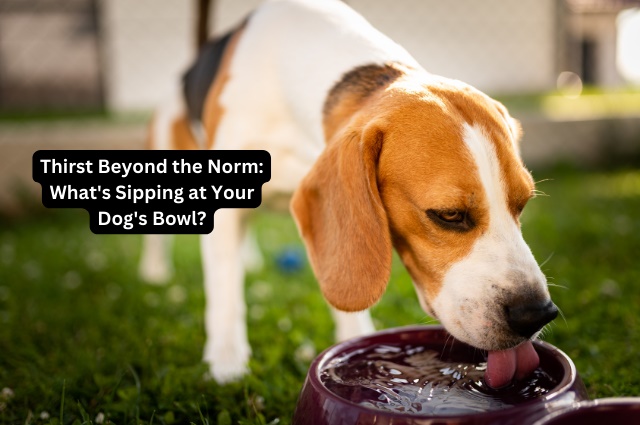
When Sips Become Gulps
Is your dog lapping up water like they’ve been exploring the Sahara? While a dog’s love for water is no surprise, excessive thirst might raise an eyebrow.
Let’s dive into the causes behind this drenching phenomenon and what it could mean for your furry friend.
🔍 Thirst on Overdrive: Possible Culprits
Excessive thirst, also known as polydipsia, can be triggered by a range of factors. Here’s a quick reference table outlining some common thirst instigators:
| Possible Cause | Description and Notes |
|---|---|
| Warm Weather | Hot days can naturally boost water intake. |
| High Activity Levels | More play = more water needs. |
| Dietary Factors | Certain foods can make dogs extra thirsty. |
| Medications | Some meds might have thirst as a side effect. |
| Underlying Health Issues | Diabetes, kidney problems, and more. |
When to Raise the Hydration Alarm
While a bit of extra sipping might not be cause for concern, it’s vital to recognize when your dog’s thirst is crossing into the danger zone.
If your furball is constantly parked by the water bowl or showing other unusual symptoms, it’s time to consult the experts.
Stay tuned as we unravel more hydration mysteries and guide you on decoding your dog’s drinking patterns! 🐶🚰
Dehydration Symptoms in Dogs: Cracking the Parched Code
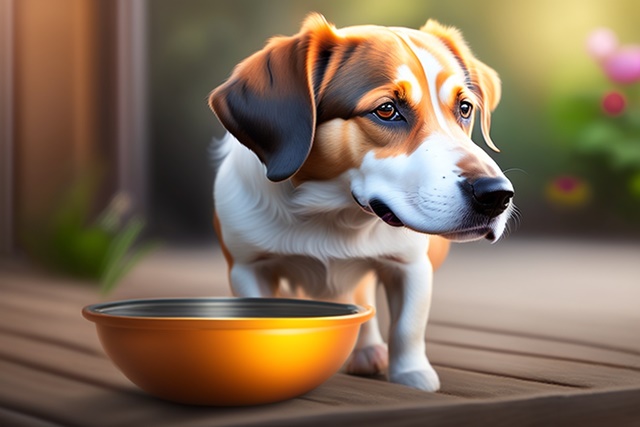
Thirst Alarm: Unmasking Dehydration’s Sneaky Signs
Beyond the Surface Sips
Water, water everywhere, but not a drop to drink?
Dehydration isn’t just a desert dweller’s woe; our four-legged pals can fall victim too. Let’s uncover the subtle signs that your dog might be longing for more than just a splash.
🔍 The Dehydration Detective
Dogs can’t simply tell us they’re feeling parched, so it’s up to us to spot the clues. Here’s a checklist to help you decode your dog’s hydration status:
- Sunken Eyes: If those peepers look more hollow than usual, it could be a sign.
- Lethargy: Is your dog less perky than normal? Dehydration might be at play.
- Dry Gums and Nose: Sticky gums and a dry schnozzle could indicate a water shortage.
- Reduced Skin Elasticity: Pinch the skin gently. If it takes time to bounce back, hydration could be lacking.
Dog Dehydration Danger Zone
Dehydration isn’t something to wag off. Mild cases might lead to discomfort, but severe dehydration can have serious consequences. Keep an eye out for these severe symptoms:
- Excessive Panting
- Collapse or Weakness
- Elevated Heart Rate
Remember, detecting dehydration early is the key to keeping your dog happy, healthy, and hydrated. Keep those water bowls brimming, and stay tuned for more awesome hydration insights! 🐾🥤
How Much Water Should a Normal Dog Drink Daily? Hydration by the Numbers
Thirst Quencher Quotas: Finding the Right Hydration Balance
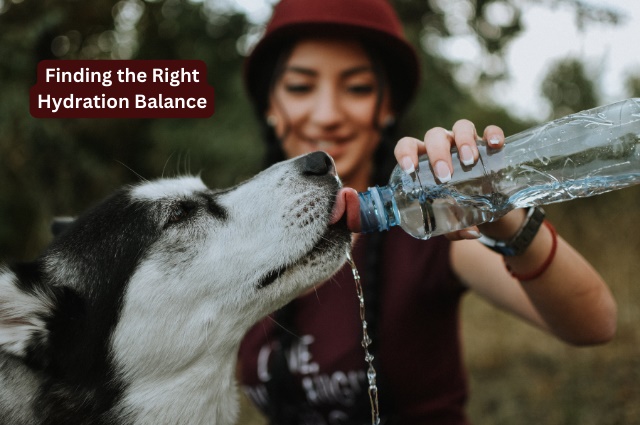
The Sip Size Secret
Just like humans, dogs have their own water needs. On average, a healthy dog should drink about 1 ounce of water per pound of body weight daily.
For a 20-pound dog, that’s roughly 20 ounces – or about 2.5 cups. But remember, these are just ballpark figures. Activity levels, weather, and diet play into the hydration equation.
Factors that Tip the Hydration Scale
The “one-size-fits-all” rule doesn’t quite cut it when it comes to hydration. Consider these influential factors:
- Diet Composition: Wet food? Dry kibble? Different diets have different water content, affecting your dog’s overall hydration needs.
- Activity Intensity: A high-energy game of fetch demands more water than a snooze session.
- Climate Conditions: A sweltering summer day calls for more water than a cozy winter one.
Strike a balance between your dog’s unique traits and the good ol’ hydration math, and you’ll have them sipping their way to tail-wagging health. Stay tuned as we fetch more insights on dog hydration! 🐶🥤
What Factors Influence a Dog’s Water Consumption? Unraveling the Thirst Triggers
Thirsty Business: Unveiling the Dog Hydration Puzzle
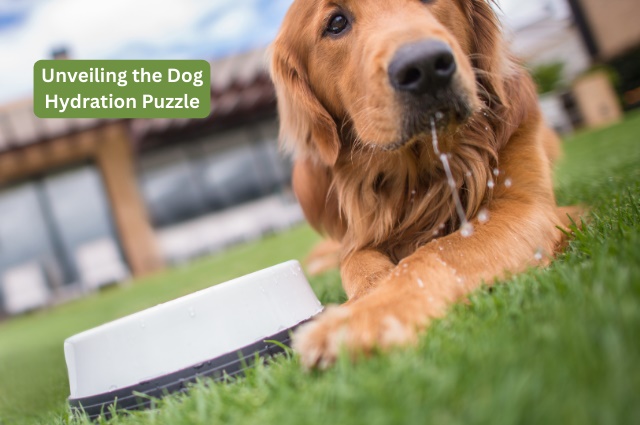
Beyond the Bowl: What Makes Dogs Guzzle or Gulp
Ever wondered why some days your dog laps up water like there’s no tomorrow, while on other days, their bowl remains untouched? It’s all about the factors that tip the hydration scale.
Let’s decode this dog drink dance.
Temperature Tango
When the mercury climbs, so does your dog’s water intake. On hotter days, dogs can guzzle up to 3 times their usual amount. Stay aware and keep those bowls filled on sunny days!
Activity Amp-Up
Playtime isn’t just fun; it’s thirsty work. A romp in the park or a spirited game of tug-of-war can make your dog pant for more than just excitement.
Salt and Savory
Certain diets, like those high in salt or protein, can leave your dog yearning for more water. Their bodies work to balance things out, leading to a serious case of the sips.
The Weighty Matter
Your dog’s size matters. A larger dog requires more water to stay hydrated than a petite pooch. As a general rule, dogs need about 0.5 to 1 ounce of water per pound of body weight.
Remember, every wagging tail is unique. Tailoring water intake to your dog’s individual quirks keeps them on the happy, healthy hydration highway.
Stay tuned for more juicy tidbits on dog drinks! 🐕🚰
What if My Dog is Drinking More Water Than Usual? Unmasking Excessive Thirst
Thirst Overdrive: When Dog Drinks Become a Flood
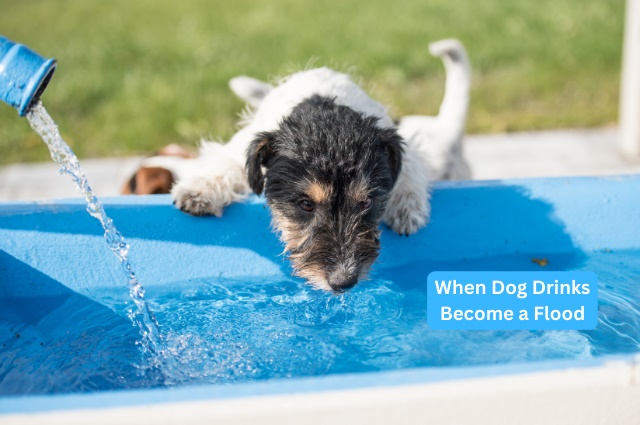
When the Bowl’s Always Half-Empty
Is your furry friend knocking back water like there’s no tomorrow?
While a good sip is essential, excessive thirst could signal an underlying issue. Let’s dig into the reasons behind this insatiable gulp-fest.
The Telltale Signs
If your dog’s water habit suddenly takes off, it’s time to play detective. Look out for these potential red flags:
- Frequent Urination: Is your dog marking more territories than usual?
- Accidents Indoors: Unplanned potty breaks might be a signal of excessive thirst.
- Change in Appetite: A ravenous appetite paired with excessive drinking could raise an eyebrow.
Possible Culprits
Excessive thirst, or polydipsia, can have a variety of triggers, from diabetes and kidney issues to certain medications. If your dog is acting like they’ve entered a water-chugging contest, consult your vet. It’s a mystery we’ll help you decode! 🐶🥤
| Read also: The Healthiest Dog Breeds [The Ultimate List] |
Are There Breeds That Require More Water Intake? Thirsty Breeds Unleashed
From Poodles to Pugs: Hydration Needs Across the Dog Crew

The Thirsty Breeds Spotlight
Ever wondered if different dog breeds have different water needs?
You’re onto something! Certain breeds are naturally thirstier than others due to factors like size and activity levels.
Let’s dive into the world of parched paws and hydrated hounds.
Size Matters, Fur Real
Check out this bark-worthy table to see how breed size can impact water intake:
| Breed Size | Water Intake Range (per 10 lbs of body weight) |
|---|---|
| Small (Pomeranian, Chihuahua) | 1 to 1 ½ cups |
| Medium (Bulldog, Beagle) | 1 ½ to 2 cups |
| Large (Labrador, Golden Retriever) | 2 to 3 cups |
| Giant (Great Dane, Newfoundland) | 3 to 4 cups |
Active Athletes vs. Couch Cuddlers
High-energy breeds like Border Collies and Huskies might chug more water due to their boundless zest. Meanwhile, mellow companions like Basset Hounds might stick to a gentler sipping pace.
Remember, knowing your dog’s breed can provide hints about their hydration needs, but individual quirks matter too. We’re here to fetch more breed-specific hydration insights for you! 🐕🥤
How Can I Encourage My Dog to Drink More Water? Unleash the Hydration Hacks!
Sip by Sip: Cracking the Code to Boost Your Dog’s Water Intake
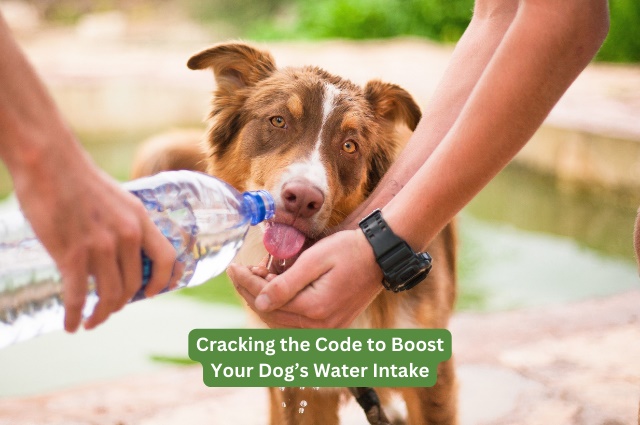
When the Bowl Stays Full
Is your dog turning its nose up at its water bowl? Don’t fret! Some dogs need a little nudge to stay hydrated.
Let’s explore clever ways to keep those water-loving tails wagging.
Flavorful Infusions
Just like us, dogs might enjoy a splash of flavor in their drinks. A drop of low-sodium broth or a piece of dog-safe fruit in their water can make it more appealing.
Cool as a Cucumber
Freshwater matters! Keep it cool and clean. A refreshing sip can be more enticing than a lukewarm slurp.
Mealtime Magic
Offer water alongside meals. When your dog’s chowing down, they might be more inclined to sip in between bites.
The Bowl Switch-Up
Try different types of bowls – stainless steel, ceramic, or even a pet water fountain. Sometimes a new setup sparks interest.
Keep in mind, a dog that’s getting enough moisture from its diet might drink less water. But with a dash of creativity, you can make hydration a tail-wagging adventure! 🐾🚰
5 Tips for Encouraging Hydration in Dogs: Quench Their Thirst for Good!
Hydration Hacks: Making Every Sip Count for Your Furry Friend
Thirsty Tricks to Try
Got a reluctant sipper on your hands? Fret not! We’ve got a toolkit of tips to make hydration a breeze for your dog:
- Fruitful Delights: Drop in dog-friendly fruits like watermelon or apples for a refreshing twist.
- Ice, Ice Baby: Pop a few ice cubes into the water bowl for a playful and cooling sip.
- Water Breaks: Incorporate short water breaks during walks, especially on warmer days.
- Mealtime Moisture: Mix a bit of water into their meals to sneak in extra hydration.
- Watering Stations: Place water bowls in different spots around the house to remind them to sip.
Remember, the goal is to make water fun and accessible. Tailoring these tricks to your dog’s preferences can turn hydration into a delightful routine! 🐶🥤
| Read also: 10 Toxic Foods You Should Avoid Feeding Your Dogs |
Solutions for Insufficient Water Intake in Dogs: Quenching the Drought
Thirsty No More: Troubleshooting Low Hydration in Dogs
When the Bowl Stays Full
If your furry friend is giving their water bowl the cold shoulder, it’s time to roll up those sleeves and tackle the hydration challenge head-on. Let’s explore smart strategies to tackle low water intake:
Quality Over Quantity: Upgrade to high-quality, moisture-rich foods. Canned foods typically have more water content than dry kibble.
Hydration-Boosting Treats: Invest in water-rich treats like watermelon or cucumber slices. These can sneak in extra moisture during snack time.
Consult the Vet: If your dog’s water intake remains stubbornly low, a visit to the vet is a must. It could be a sign of an underlying health issue.
Flavorful Temptations: Add a splash of low-sodium chicken broth to their water. This can add flavor and make the bowl more enticing.
Remember, the path to better hydration is paved with patience, creativity, and a lot of tail-wagging enthusiasm! 🐕🚰
Conclusion:
As we bid adieu to this dog hydration journey, remember that keeping your dog well-hydrated isn’t just about filling a bowl—it’s about nurturing their health and happiness.
Water isn’t just a thirst quencher; it’s a vital ingredient for a vibrant life. From maintaining body temperature to supporting digestion, every wag, bounce, and playful bark is fueled by this clear elixir.
By now, you’ve learned that your dog’s hydration needs are as unique as its personality. It’s not just about the numbers, but a dance between size, activity levels, and even the weather outside.
Whether your dog laps up their water like a champ or needs a little nudge, you’ve got a toolkit of tricks to make hydration a breeze.
Remember, being a responsible pet parent means being in tune with your dog’s cues.
Regularly monitoring their water intake and being attentive to signs of dehydration or excessive thirst can help you catch potential issues early. If in doubt, don’t hesitate to consult your vet—after all, they’re your dog’s ultimate health ally.
So here’s to keeping those tails wagging and those water bowls brimming!
With these insights, you’re well-equipped to master the art of dog hydration and provide your furry friend with a lifetime of health, happiness, and hydration. 🐾🚰
About The Author:
Stacey Smith is a freelance health writer. She is passionate to write about women’s health, dental health, diabetes, endocrinology, and nutrition and provides in-depth features on the latest in health news for medical clinics and health magazines.


![[Infographic] Guidelines for Safeguarding Your Health and Well-Being Amidst a Relocation Guidelines for Safeguarding Your Health and Well-Being Amidst a Relocation](https://www.safeandhealthylife.com/wp-content/uploads/2024/01/Relocation-150x150.webp)

